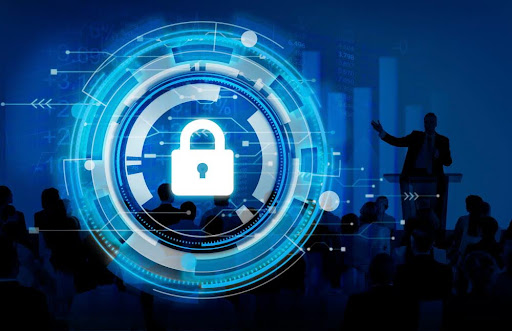Building a Strong Foundation: Implementing Access Governance Solutions

In today’s digital landscape, where data breaches and cyber threats loom large, organizations must prioritize the establishment of robust access governance solutions.
These solutions play a critical role in managing and controlling user access to sensitive information and resources, thereby safeguarding against unauthorized access and potential security breaches.
Building a strong foundation through the implementation of effective access governance solutions is essential for ensuring compliance, enhancing security, and mitigating risks.
Understanding Access Governance Solutions
Access governance solutions are comprehensive frameworks and tools designed to manage and control user access to digital assets, applications, and systems within an organization.
These solutions encompass a range of capabilities, including identity management, access control, user provisioning, and compliance reporting.
By centralizing access management processes and enforcing consistent policies and controls, access governance solutions help organizations mitigate the risk of unauthorized access and ensure compliance with regulatory requirements.
Key Components of Access Governance Solutions
1. Identity Management: Identity management forms the cornerstone of access governance solutions, providing a centralized platform for managing user identities, authentication credentials, and access rights.
By maintaining accurate and up-to-date user profiles, organizations can effectively control access to resources and mitigate the risk of identity-related security breaches.
2. Access Control: Access control mechanisms enforce policies and rules governing user access to applications, data, and systems based on predefined criteria such as user roles, permissions, and organizational policies.
Access governance solutions employ access control mechanisms to enforce the principle of least privilege, ensuring that users have access only to the resources necessary for their roles and responsibilities.
3. User Provisioning: User provisioning capabilities automate the process of granting and revoking access rights based on predefined workflows and approval processes.
By streamlining user provisioning tasks, access governance solutions help organizations reduce administrative overhead and ensure that access rights are granted and revoked in a timely manner, minimizing the risk of unauthorized access.
s
4. Compliance Reporting: Compliance reporting features enable organizations to generate audit trails, access logs, and compliance reports to demonstrate adherence to regulatory requirements and internal policies.
Access governance solutions provide organizations with the visibility and transparency needed to monitor user access, track changes, and identify potential security gaps or violations.
Building a Strong Foundation: Best Practices for Implementation
Implementing access governance solutions requires careful planning, coordination, and adherence to best practices to ensure successful deployment and adoption.
Here are some key considerations for building a strong foundation:
1. Assess Organizational Needs and Requirements:
Before selecting and implementing access governance solutions, organizations should conduct a comprehensive assessment of their business requirements, security objectives, regulatory obligations, and existing infrastructure.
By understanding their specific needs and challenges, organizations can identify the most suitable access governance solution that aligns with their goals and objectives.
2. Define Policies and Access Controls:
Establishing clear and comprehensive access policies and controls is essential for effective access governance.
Organizations should define roles, permissions, and access rights based on job roles, responsibilities, and least privilege principles.
By defining granular access controls, organizations can minimize the risk of unauthorized access and ensure compliance with regulatory requirements.
3. Implement Identity Lifecycle Management Processes:
Identity lifecycle management processes automate the creation, modification, and deactivation of user accounts throughout the user’s tenure with the organization.
By implementing identity lifecycle management processes, organizations can ensure that access rights are granted and revoked in a timely manner, reducing the risk of orphaned accounts and unauthorized access.
4. Leverage Automation and Orchestration:
Automation and orchestration capabilities streamline access governance processes by automating repetitive tasks, such as user provisioning, access requests, and access reviews.
By leveraging automation and orchestration, organizations can improve operational efficiency, reduce errors, and enhance security by enforcing consistent policies and controls.
5. Provide User Training and Education:
User training and education are essential for promoting awareness and understanding of access governance policies, procedures, and best practices.
Organizations should provide comprehensive training programs to educate employees about their roles and responsibilities regarding access management, password hygiene, and security awareness.
6. Monitor and Audit Access Activities:
Continuous monitoring and auditing of access activities are critical for detecting unauthorized access, suspicious behavior, and compliance violations.
Organizations should implement robust logging and monitoring mechanisms to track user access, changes to access permissions, and security incidents.
Regular access reviews and audits help organizations identify and remediate security gaps and ensure ongoing compliance.
Conclusion
Building a strong foundation through the implementation of effective access governance solutions is essential for organizations seeking to mitigate security risks, ensure compliance, and safeguard against unauthorized access.
By understanding the key components of access governance solutions and following best practices for implementation, organizations can establish a comprehensive framework for managing and controlling user access to digital assets, applications, and systems.
By prioritizing access governance, organizations can strengthen their security posture, enhance operational efficiency, and foster a culture of accountability and compliance in today’s rapidly evolving threat landscape.



